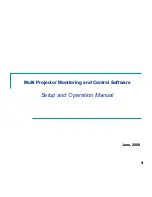
Elements of a Sound
Putting it all together
Having shown that just three elements make up any sound, these elements now have to be
related to a musical synthesizer. It is logical that each element of the sound is handled by
different sections on a music synthesiser.
OSCILLATORS generate the basic waveforms which provide the pitch of the sound along with
its raw harmonic content (tone). This passes into a section called the FILTER which is
responsible for further altering the tone of the oscillator’s basic waveform. It does this by
removing (filtering) certain undesired harmonics. Lastly, the filtered signal is fed into an
AMPLIFIER which determines the final volume of the sound. The simplest synthesizer would
look something like this:
OSCILLATOR
FILTER
AMPLIFIER
However, additional synthesizer sections; LFOs (low frequency oscillators) and ENVELOPES
provide ways of altering the pitch, tone and volume of a sound by interacting with the
oscillators, filter and amplifier. They introduce changes in the character of a sound that evolve
throughout the duration of the sound. Because the LFOs and Envelopes’ only purpose is to
control (modulate) the other synthesizer sections, they are commonly known as ‘modulators’. A
more advanced synthesizer might look like this:
OSCILLATOR
FILTER
AMPLIFIER
LFO
ENVELOPE
ENVELOPE
The oscillator generates the basic waveform but can be controlled (or modulated) from the LFO
for effects such as vibrato, etc.. The oscillator’s signal passes on to the filter where the basic
waveform can be modified further and the filter’s envelope can cause tonal changes to take
place over time. Finally, the sound passes onto the amplifier where the sound’s envelope can
be shaped.
The V-Station’s sound generating process is all based around these basic principles except
that it has three oscillators which can be mixed and combined in any number of ways to provide
a far greater palette of raw waveforms than a single oscillator could ever produce. The
oscillators can also be detuned to create a denser sound (consider the sound of a single violin
compared with a string ensemble where several violins are playing together but all slightly
detuned from each other).
These three oscillators are then mixed together in a mixer and the output of this mixer passes
to the filter. The filter can be controlled by its own envelope but also by a separate LFO. The
signal then passes through a final amplifier that can be shaped with its own envelope. On the
V-Station, however, the output of the amplifier also passes through multi-effects where you
can add echo, reverb, chorus, etc., to add the final polish to the sound.
The various synthesizer sections will now be covered in more detail.
10
Synthesis Tutorial











































